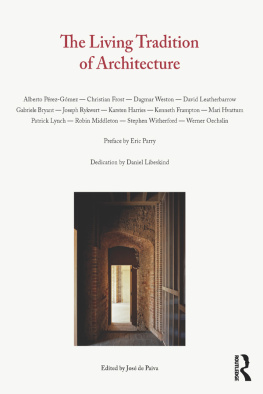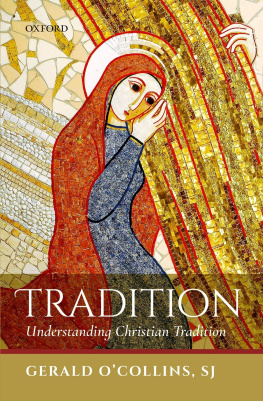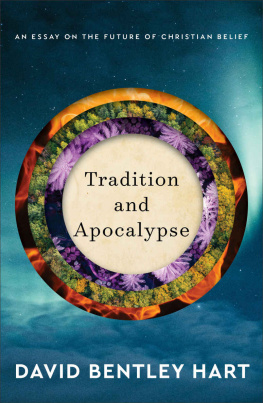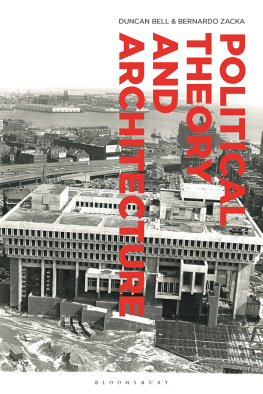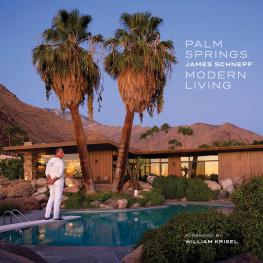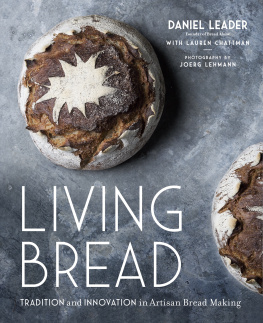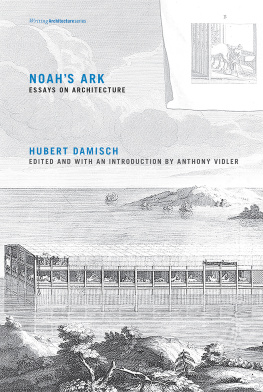The Living Tradition of Architecture
The Living Tradition of Architecture
Alberto Prez-GmezChristian FrostDagmar WestonDavid LeatherbarrowGabriele BryantJoseph RykwertKarsten HarriesKenneth FramptonMari HvattumPatrick LynchRobin MiddletonStephen WitherfordWerner OechslinEric ParryDaniel LibeskindJos de Paiva
Preface by Eric Parry
Dedication by Daniel Libeskind
Edited with an introduction by
Jos de Paiva
First published 2017
by Routledge
2 Park Square, Milton Park, Abingdon, Oxon OX14 4RN
and by Routledge
711 Third Avenue, New York, NY 10017
Routledge is an imprint of the Taylor & Francis Group, an informa business
2017 Jos de Paiva
The right of the editor to be identified as the author of the editorial material, and of the authors for their individual chapters, has been asserted in accordance with sections 77 and 78 of the Copyright, Designs and Patents Act 1988.
All rights reserved. No part of this book may be reprinted or reproduced or utilised in any form or by any electronic, mechanical, or other means, now known or hereafter invented, including photocopying and recording, or in any information storage or retrieval system, without permission in writing from the publishers.
The views expressed in this book remain those of each author and do not necessarily represent those of the editor.
Trademark notice: Product or corporate names may be trademarks or registered trademarks, and are used only for identification and explanation without intent to infringe.
Publishers Note
This book has been prepared from camera-ready copy provided by the editor.
British Library Cataloguing-in-Publication Data
A catalogue record for this book is available from the British Library
Library of Congress Cataloging-in-Publication Data
Names: Paiva, Jos de (Architect), editor.
Title: The living tradition of architecture / Alberto Prez-Gmez, Christian Frost, Dagmar Weston,David Leatherbarrow, Gabriele Bryant, Joseph Rykwert, Karsten Harries, Kenneth Frampton, MariHvattum, Patrick Lynch, Robin Middleton, Stephen Witherford, Werner Oechslin; Preface by EricParry; Dedication by Daniel Libeskind; Edited with an introduction by Jos de Paiva.
Description: New York: Routledge, 2017. | Includes bibliographical references and index.
Identifiers: LCCN 2016023178| ISBN 9781138640481 (hb: alk. paper) | ISBN 9781138640504 (pb: alk. paper) | ISBN 9781315636573 (ebook)
Subjects: LCSH: Architecture and history.
Classification: LCC NA2543.H55 L58 2017 | DDC 720.9--dc23
LC record available at https://lccn.loc.gov/2016023178
ISBN: 978-1-138-64048-1 (hbk)
ISBN: 978-1-138-64050-4 (pbk)
ISBN: 978-1-315-63657-3 (ebk)
Cover photo: Hlne Binet. Witherford Watson Mann, Astley Castle, Warwickshire.
Photographed in 2012.
Design by Daniel Benneworth-Gray.
Typeset in Adobe Caslon.
Contents
Eric Parry
Preface
Jos de Paiva
The Living Tradition of Architecture
Daniel Libeskind
Remembrance of Things Past
Werner Oechslin
Prudentia non est scientia
Joseph Rykwert
Model, Type and the Great Church
Mari Hvattum
Goethe Blindfolded
Karsten Harries
Beauty, Nostalgia, Hope: The pulpit in Oppolding
Robin Middleton
Ideas on Movement in Architecture in Britain and France during the Eighteenth Century
Kenneth Frampton
Towards an Ontological Architecture: A philosophical excursus
Gabriele Bryant
Modern Aesthetics and the Machine: Technology and the Gesamtkunstwerk in early twentieth-century Germany
Alberto Prez-Gmez
Le Corbusiers La Tourette and the Hermeneutic Imagination
David Leatherbarrow
Rule and Law Architecture and Nature: Kahns design for the St Andrews Priory
Dagmar Weston
The Language of Stones: Towards a situated architecture in the design studio
Christian Frost
Tradition and Historicism in the Remodelling of Tate Britain
Patrick Lynch
Civic Bodies: Lynch Architects at Victoria Street
Stephen Witherford
Half of it is not necessarily in ruins
Any endeavour to approach the living tradition of architecture calls for the living experience of many years summed up in a form of writing which will, at each turn, rekindle its present memory for our time. The following collection brings together some of the most relevant contemporary authors, and in that sense, emerged from a long gestation before essays were written and writings quickly gathered. This collection is dedicated in honour of Dalibor Vesely. As the years passed since the idea came into conversation, it was at his instance that work began. All essays as they arrived were discussed with him regularly, drawings too were offered, going then through his demanding vision. This book would not have been possible without such vision, it is openly structured in its light. The production of writing, the collection itself, depended solely on the generosity of its authors whose lifelong work and experience in the field speaks for itself. The deepest thanks are owed to Joseph Rykwert, Kenneth Frampton, Robin Middleton, who responded most promptly with their own writing. Thanks are owed to Karsten Harries for the true beauty, nostalgia and hope of his approach to life and architecture, to Werner Oechslin and the rigour of his critical interpretation, to Daniel Libeskind and the wonderful genius of his drawing dedication. Thanks are owed to the height of the writings of Alberto Prez-Gmez and David Leatherbarrow on traditional forms of life and modern architecture. And profound acknowledgement must be made here to Eric Parry whose work and friendship to this project has contributed decisively to its existence. Thanks are owed to Dagmar Weston, and Mari Hvattum, and Christian Frost, and especially Gabriele Bryant for her personal contribution to this book, which is real and selfless. Thanks are owed to Patrick Lynch for his friendship, work and readiness in the midst of battle. Thanks are owed to Stephen Witherford and the truly poetic vision that has taken flesh in Astley Castle. The nature of this work required the council of many, but especially, the sensitivity and rigour of Alexandra Stara, whose direct assistance during the initial stages was determinant to the present publication. As words came to visibility, the task inevitably called for the artistic commitment of photographers and visual artists, in particular the work of Hlne Binet whose photography for the cover and many of the projects brings their nature to light; but also David Grandorge and his vision of the urban hinterland; and Rut Blees Luxemburg and her monumental photographic work. At the request of the authors, additional images were provided by Angeliki Sioli and Tony Bryant, which illustrate some of the most important examples of twentieth-century architecture. Among friends and colleagues, special acknowledgement should be made to Claudia Tschunko, Damien Lee, Eimear Hanratty, Katharina Parsons, Matthew Wells, and Russell Watson, who either through their reading or advice contributed to the present existence of this book. Thanks are owed to Daniel Benneworth-Gray, whose visual sensitivity and experience contributed decisively to the tangible quality of this volume and careful presentation of its contents. The library and archival resources involved in this task were substantial, and a final but very special mention should be made here to the Stiftung Bibliothek Werner Oechslin, the Louis I. Kahn Collection, University of Pennsylvania and the Pennsylvania Historical and Museum Commission, and the Sir John Soane Museum in London.

